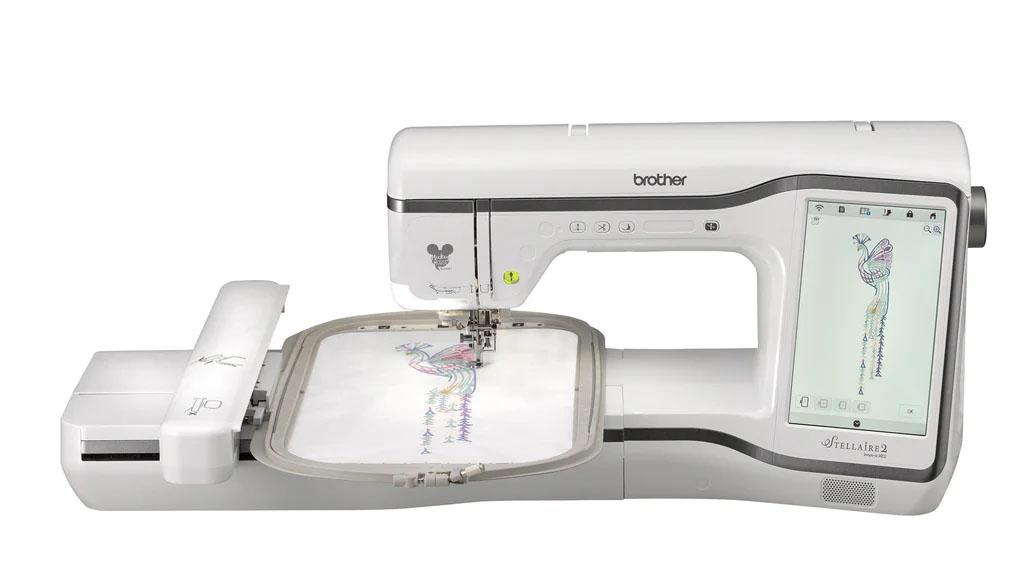The Future of Embroidery: Why Digitized Designs Are Taking Over

Introduction
Embroidery has long been a craft steeped in tradition. From intricate hand-stitched patterns to machine embroidery that brought speed to the process, the journey of embroidery has always been one of innovation. But the newest revolution is digital—Digitized Embroidery Design is changing everything. Welcome to The Future of Embroidery: Why Digitized Designs Are Taking Over—a deep dive into the world where technology meets thread and needle.
Whether you're a business owner looking to scale your custom apparel production or a hobbyist aiming for perfect stitching every time, understanding the shift to digitized embroidery designs is crucial. Let’s explore how digital embroidery is redefining the industry and why it’s more than just a passing trend.
What Does “Digitized Embroidery” Mean?
The Basics of Embroidery Digitizing
Embroidery digitizing is the process of converting artwork—like a logo or drawing—into a digital file that an embroidery machine can interpret. This file tells the machine how to stitch the design: where to start, how many stitches to use, what direction they should go, and even how the layers should stack.
Traditional vs. Digitized Embroidery
| Feature | Traditional Embroidery | Digitized Embroidery |
|---|---|---|
| Technique | Manual or mechanical | Computer-driven |
| Speed | Time-consuming | Fast and automated |
| Detail | Limited | Highly intricate |
| Scalability | Labor-intensive | Easily scalable |
Digitized embroidery takes the guesswork out of stitching. With the right software, a clean design, and a skilled digitizer, the result is consistently professional-quality embroidery.
The Future of Embroidery: Why Digitized Designs Are Taking Over
1. Speed and Efficiency
One of the top reasons digitized designs are dominating the embroidery industry is sheer speed. Once your design is digitized, it can be stitched out repeatedly with little variation or effort. This is a game-changer for commercial embroidery businesses needing to fulfill large orders quickly.
2. Unmatched Consistency
With digitized designs, every single product comes out looking exactly the same. Whether you're making 10 or 10,000 units, digitized files ensure your quality stays consistent—something that's nearly impossible with hand or manually operated machine embroidery.
3. More Design Freedom
Advanced digitizing software allows for:
-
Gradient stitching
-
3D puff effects
-
Custom fill patterns
-
Intricate text embroidery
These capabilities are opening creative doors that were once closed due to technical limitations.
How Technology Is Driving the Change
Embroidery Software Evolution
Modern embroidery software like Wilcom, Hatch, and Pulse have dramatically improved. Features now include auto-digitizing (with manual refinement), preview simulations, and built-in error-checking to reduce stitching issues before production begins.
Cloud Storage & Design Libraries
Designers can now store thousands of digitized designs in the cloud and access them anywhere. Many services even offer subscription-based design libraries that cater to various industries—from sportswear to corporate branding.
The Business Case for Going Digital
Lower Long-Term Costs
While there’s an upfront investment in software and learning, digitized embroidery saves money in the long run:
-
Fewer thread breaks and machine errors
-
Reduced material waste
-
Less manual labor
Faster Turnaround = Happier Customers
With faster production times and consistent results, you can take on more orders and deliver them faster. That translates directly into increased customer satisfaction and repeat business.
Common Misconceptions About Digitized Embroidery
“Auto-digitizing is good enough.”
Auto-digitizing can be helpful, but it rarely replaces manual digitizing for complex designs. A human touch ensures proper stitch density, underlay placement, and compensation for fabric type.
“All digitized files work on every machine.”
Wrong. Different embroidery machines require specific file formats (like DST, PES, EXP). Always make sure your design is compatible with your machine’s software and hardware.
Choosing the Right Digitizing Service
What to Look for in a Professional Digitizer
-
Portfolio of past work
-
Experience with your type of fabric and design
-
Quick turnaround times
-
Willingness to offer revisions
Questions to Ask Before Hiring
-
Can you provide a stitch-out sample?
-
Do you charge by stitch count, design complexity, or flat rate?
-
What file formats do you offer?
-
Do you test your files before delivering?
The Future of Embroidery: Why Digitized Designs Are Taking Over – What’s Next?
AI-Powered Digitizing
Artificial intelligence is beginning to influence embroidery too. Some platforms are experimenting with AI tools that predict optimal stitch paths and even self-correct poorly digitized designs.
Augmented Reality (AR) for Design Preview
Imagine showing a client exactly how their logo will look on a shirt via an AR preview before a single stitch is made. It’s closer to reality than you might think.
Eco-Conscious Embroidery
Digitizing also supports sustainability by reducing thread waste and material testing. More efficient stitch planning leads to greener production methods.
Tips for Beginners Embracing Digitized Embroidery
-
Start simple: Choose designs with fewer colors and simple shapes.
-
Learn the software: Even basic knowledge of tools like Hatch can go a long way.
-
Test on scrap fabric: Always test your design before mass production.
-
Join online communities: Facebook groups, YouTube channels, and Reddit threads are goldmines of tips.
Conclusion
Digitized embroidery isn’t just the future—it’s the present. The reasons are clear: it’s faster, cleaner, more creative, and more cost-effective than traditional methods. Whether you’re a business trying to elevate your branding or a creative experimenting with custom stitching, understanding The Future of Embroidery: Why Digitized Designs Are Taking Over will put you ahead of the curve.
As digitizing technology continues to evolve, embracing these innovations will become essential—not optional. So, pick up that mouse and thread, and step confidently into the next era of embroidery.
- Art
- Causes
- Best Offers
- Crafts
- Dance
- Drinks
- Film
- Fitness
- Food
- Jeux
- Festival
- Gardening
- Health
- Domicile
- Literature
- Music
- Networking
- Autre
- Party
- Religion
- Shopping
- Sports
- Theater
- Wellness



